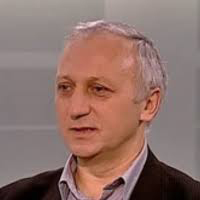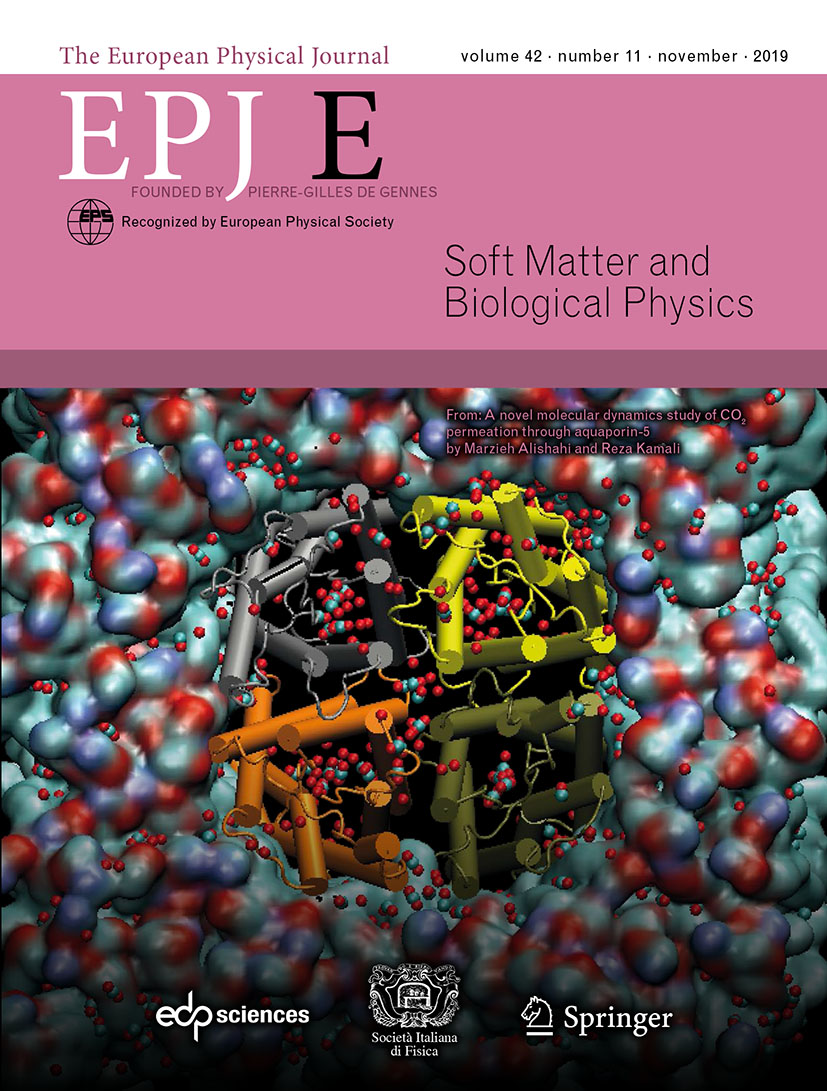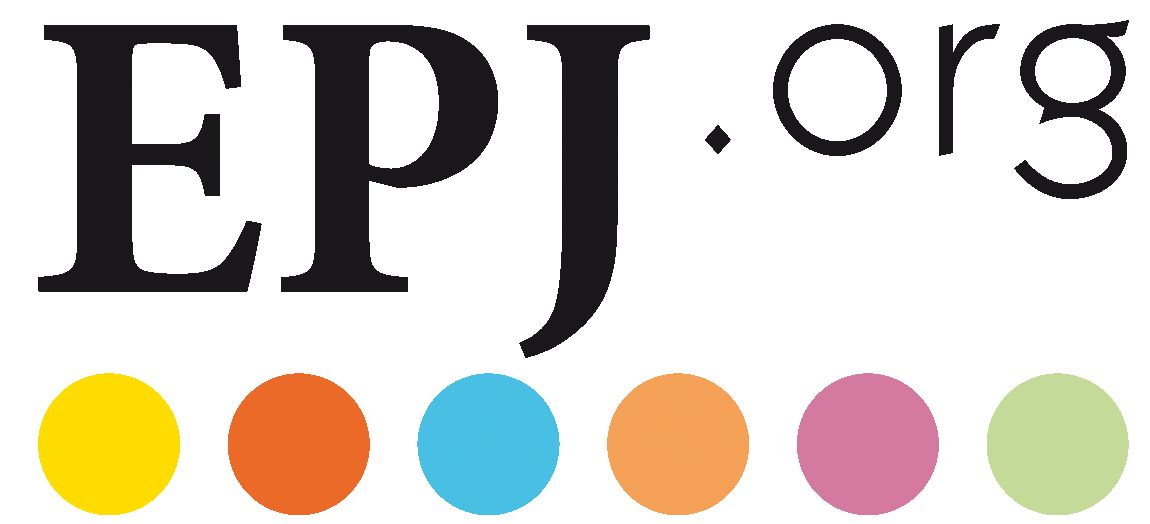News
Eduard Boos joins the EPJ Scientific Advisory Committee (SAC)
- Details
- Published on 08 January 2020

The Scientific Advisory Committee of EPJ is delighted to welcome Professor Eduard Boos as the new representative for the Russian Academy of Sciences.
Eduard Boos is Professor at Lomonosov Moscow State University (MSU) and head of high energy experimental physics department in the D.V. Skobeltsyn Institute of Nuclear Physics of MSU.
He is an active member of CMS collaboration at CERN LHC http://www.sinp.msu.ru/en/strukted/1655
His expertise will be highly appreciated for the review of and advice on the publishing strategy of EPJ. His membership of the committee will support the visibility of EPJ in his community.
EPJE Topical review - Viscosity of nanofluids containing anisotropic particles: A critical review and a comprehensive model
- Details
- Published on 24 December 2019
When compared to nanofluids with spherical particles, nanofluids with anisotropic particles possess higher thermal conductivity and thus offer a better enhancement option in heat transfer applications. The viscosity variation of such nanofluids becomes of great importance in evaluating their pumping power in thermal systems.
EPJ D Highlight - Buckyballs release electron-positron pairs in forward directions
- Details
- Published on 23 December 2019

Theoretical calculations reveal that when impacted by positrons of particular energies, spherical nanoparticles release unstable electron-positron pairs, with signals dominating in the same direction as the incoming positrons.
When electrons collide with positrons, their antimatter counterparts, unstable pairs can form in which both types of particle orbit around each other. Named ‘positronium’, physicists have now produced this intriguing structure using a diverse range of positron targets – from atomic gases to metal films. However, they have yet to achieve the same result from vapours of nanoparticles, whose unique properties are influenced by the ‘gases’ of free electrons they contain in well-defined, nanoscopic regions. In new research published in EPJ D, Paul-Antoine Hervieux at the University of Strasbourg, France and Himadri Chakraborty at Northwest Missouri State University, USA, reveal the characteristics of positronium formation within football-shaped nanoparticles, C60, for the first time. At specific positron impact energies, they show that positronium emission dominates in the same direction as the incoming antiparticles.
EPJE appoints new Editors-in-Chief
- Details
- Published on 23 December 2019

EPJ is pleased to announce that January 2020 will see the appointment of two new Editors-in-Chief for EPJ E, Prof Fabrizio Croccolo (Université de Pau et des Pays de l'Adour, France) and Prof Dr Holger Stark (Technische Universität Berlin, Germany).
EPJD has appointed a new Editor-in-Chief
- Details
- Published on 18 December 2019

EPJ is pleased to announce that Prof Sylwia Ptasinska of the University of Notre Dame, USA has been appointed as an Editor-in-Chief for EPJ D, effective January 2020. She will be responsible for the plasmas section of the journal, and succeeds Prof Holger Kersten, who steps down after five years in the role. A faculty member at Notre Dame since 2010, her research focuses on understanding the variety of processes occurring in heterogeneous systems, including plasmas and interfaces. Though experimental investigations in her laboratory address fundamental questions, the goal of her team is to apply this research in areas such as energy, medicine, and industry. Sylwia Ptasinska is a member of the Executive Committee for the Gaseous Electronics Conference (GEC) and is also the local chair of the next POSMOL meeting. She has been a member of the Editorial Board for EPJD since 2015.
EPJ SAC meeting in 2020
- Details
- Published on 17 December 2019

The incoming Chair for the year 2020 of the Scientific Advisory Committee (SAC) of EPJ, Jef Ongena, President of the Belgian Physical Society, will host the annual SAC meeting in April 2020, in Brussels. The venue of the meeting is the Club Prince Albert in Brussels.
The SAC, with its representatives from physical societies in Europe, advises the Steering Committee in all matters that concern EPJ such as the scientific policy and conduct to ethical standards, nomination of new Editors-in-Chief, publishing strategies and the visibility of EPJ in the physics community. The Chair of the SAC rotates each year among its members. The close proximity of EPJ to physicists and the physical societies undoubtedly contributes to its good reputation, while the direct involvement of physical societies remains an absolute priority to EPJ.
More information here.
EPJ D Highlight - Laser-based prototype probes cold atom dynamics
- Details
- Published on 16 December 2019

A new prototype design doubles the frequencies of widely used telecommunications lasers to study the dynamics of cold atoms while in space.
By tracking the motions of cold atom clouds, astronomers can learn much about the physical processes which play out in the depths of space. To make these measurements, researchers currently use instruments named ‘cold atom inertial sensors’ which, so far, have largely been operated inside the lab. In new work published in EPJ D, a team of physicists at Muquans and LNE-SYRTE (the French national metrology laboratory for time, frequency and gravimetry) present an innovative prototype for a new industrial laser system. Their design paves the way for the development of cold atom inertial sensors in space.
EPJ H Highlight - Unpacking the mystery of Feynman’s reference amplifier
- Details
- Published on 13 December 2019

A review of lectures given by Feynman between 1946 and 1971 showcase the strong influence that his involvement in the Manhattan Project held on his research, while revealing an intriguing mystery surrounding one particular amplifier device.
Richard Feynman was one of the 20th century’s most celebrated physicists. In 1943, he began his career in the Manhattan Project, where one of his tasks was to develop a device which could count the neutrons produced by nuclear reactions. Neutron signals emerging from counters must be strongly amplified to achieve this, but in the 1940s, practical amplification devices were hindered by their distorted signals. To overcome the issue, Feynman proposed a theoretical ‘reference amplifier’, which could provide amplifiers with a standard signal to be compared with. Through analysis published in EPJ H, researchers at the University of Naples, Italy, propose that this line of research exemplifies the influence which Feynman’s involvement in the Manhattan Project held over his later teaching and research.
EPJ D Highlight - Colliding molecules and antiparticles
- Details
- Published on 13 December 2019

A new theoretical study of the interaction between positrons and simple tetrahedral and octahedral molecules agrees with experimental work and could have useful implications for PET scanning techniques.
Antiparticles - subatomic particles that have exactly opposite properties to those that make up everyday matter - may seem like a concept out of science fiction, but they are real, and the study of matter-antimatter interactions has important medical and technological applications. Marcos Barp and Felipe Arretche from the Universidade Federal de Santa Catarina, Brazil have modelled the interaction between simple molecules and antiparticles known as positrons and found that this model agreed well with experimental observations. This study has been published in EPJ D.
EPJ A Highlight - Towards the solution of the “hyperon puzzle”
- Details
- Published on 12 December 2019

The possible presence of strange matter in the core of neutron stars has given rise to the so-called hyperon puzzle: hyperonic degrees of freedom are energetically allowed in the extreme density conditions believed to exist in the core of Neutron Stars, but hyperons reduce the internal pressure of the star, which then cannot compensate the gravitational field to sustain the most massive compact stars observed.
This work reports on the effect of three-body interactions when including a Lambda hyperon on the properties of hyper-nuclei and Neutron Stars. State-of-the-art three-body chiral effective interactions are introduced in a microscopic Brueckner-Hartree-Fock calculation.





